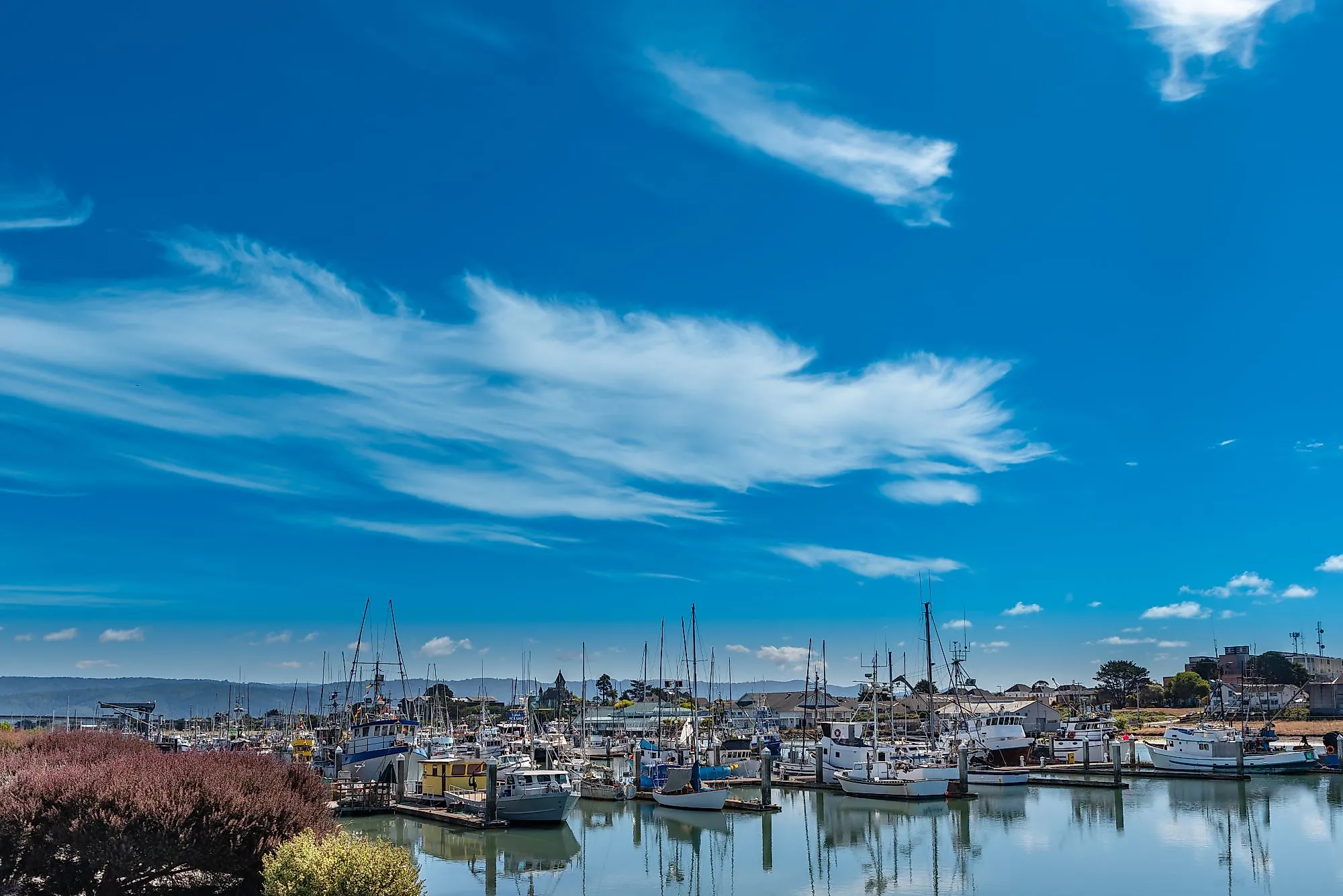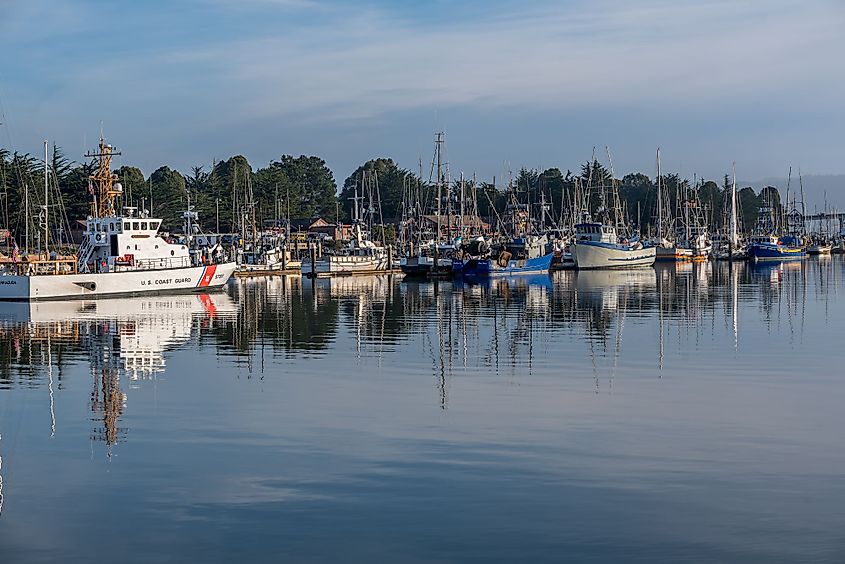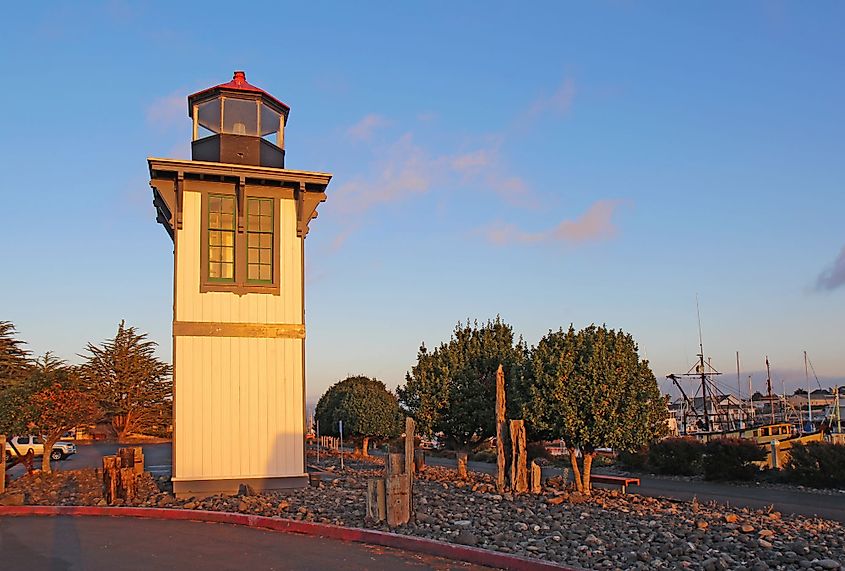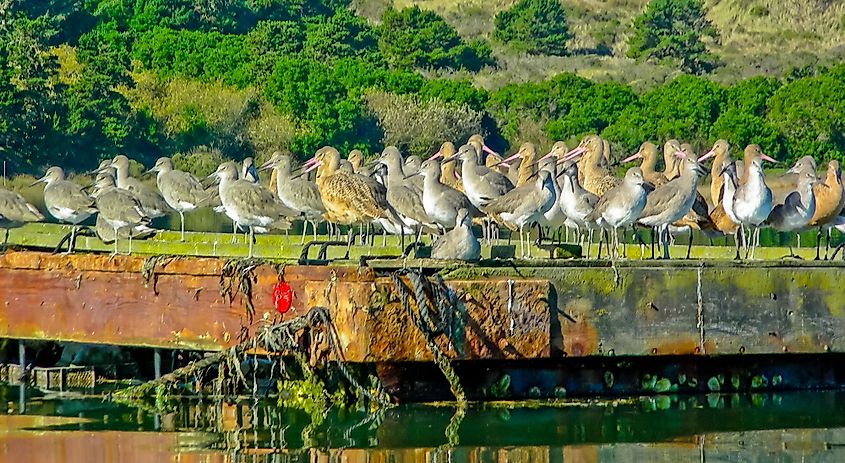
Humboldt Bay
The second-largest natural coastal bay in the US State of California, Humboldt Bay, is surrounded by the cities of Eureka and Arcata and is home to various birds and aquatic life. It is the only significant deep-water port for California north of San Francisco Bay and is situated roughly 225 miles north of San Francisco. The bay offers many distinctive habitats, including open water, shallow water, mud flats, salt marshes, ponds, agricultural lands, sand beaches, islands, and wooded riparian vegetation.
Geography Of Humboldt Bay

Humboldt Bay is a natural bay that is fully located within Humboldt County on the rugged North Coast of California. With more than 17,000 acres of water, mud flats, and marshes, it is the West Coast's largest protected water body, placed between San Francisco Bay and Puget Sound. It is also the largest port located between San Francisco and Oregon's Coos Bay. The county seat and regional hub of Humboldt County, Eureka, is the largest city bordering the bay, followed by Arcata. In addition to this, the Humboldt Bay Area is made up of several major cities, unincorporated villages, and several small towns. The Humboldt Bay, which is 22.5 km long and 7.2 km wide, is divided into three sub-bays: Arcata Bay in the north, Entrance Bay in the middle, and South Bay in the south. Because the Arcata and South Bays are shallow, the water levels within the bay vary dramatically. Breakers frequently form during tidal fluctuations and produce tremendous turbulence at the bay's deep, narrow entrance. Humboldt Bay is risky to enter or leave for this reason.
Geology Of Humboldt Bay
When a river valley drowned around 10,000 to 15,000 years ago as a result of a period of rapid sea level rise, Humboldt Bay started to emerge. Additionally, buried salt marsh deposits are found in the bay sediments, indicating that parts of the bay have sunk during sporadic large-magnitude subduction earthquakes. During the middle Pleistocene, three rivers—the Mad, Elk, and Eel—drained into Humboldt Bay. Later, the Mad River created a brand-new seawater outlet, and the geologic uplift of Table Bluff at the southern end of the bay redirected the Eel's flow, although Elk River still empties into Humboldt Bay.
Brief History Of Humboldt Bay

When Josiah Gregg and his group searched for a quicker supply route to Trinity River gold miners in 1850, they discovered Humboldt Bay and its surrounding forest of enormous trees. There were nine sawmills on the bay in 1854. According to a state study, the region around Humboldt Bay was "the most extensive lumber district in the state" by 1859. The North Coast had 400 mills operating within 30 years, harvesting some of the largest trees on earth. Lumber is the reason Eureka and the neighboring communities were established. The wealthy Victorian residences were constructed by lumber industry professionals, who also owned the banks, railroads, and ships. Politicians in the city were also lumber barons. Because of timber, people of every social class, nationality, and educational level settled in the area.
Wildlife In Humboldt Bay

The Humboldt Bay houses over 100 floral species, 300 non-chordate species, 100 fish species, and 200 avian species. Thousands of migratory and local shorebirds are also supported by the bay and its intricate network of marshes and grasses. The majority of raptor and waterbird species are most active from November through April. The breeding season for Pacific brant, migratory shorebirds, and Aleutian cackling geese is from late March to early April. Many terns, cormorants, and pelicans can be seen during the summer, along with resident egrets, herons, and migrating songbirds like warblers, sparrows, and swallows. Big skate, herring, Pacific tomcod, seven-gill cow sharks, and cabezon are among the fish species found in the bay. Moreover, all three types of salmon—Coho, Chinook, and Steelhead—pass through Humboldt Bay en route to the bay's rivers to spawn. The greatest oyster production facilities on the West Coast are located in this Humboldt Bay, where over half of the state's oysters are farmed.
Humboldt Bay will be the most severely impacted region on the California coast as a result of sea level rise due to global warming. As a result, the general public, agency specialists, and elected officials must make defensible decisions about how to handle the resulting rising water levels in this economically active area.










